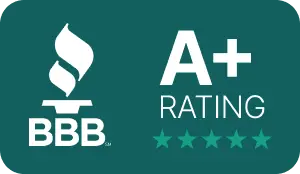Probate often surprises heirs with how many checks they must write before any inheritance can be distributed. While petitioning the court looks simple on paper, every subsequent motion, public notice, and certified document adds another debit to the estate’s operating balance. Below is a qualitative, state-by-state look at where costs are light, moderate, or heavy, plus strategies for folding those expenses into a sensible liquidity plan—without quoting a single dollar.
Filing Fees: More Than a One-Time Dip Into the Checkbook
Each state sets a statutory base fee to open an estate, and counties layer on their own surcharges. In states with small populations and rural court systems, the opening fee is generally modest. Move to coastal or densely populated corridors and that number jumps to a mid-range figure. Add large urban courts, and the base fee climbs again into the premium tier.
Why it matters: regardless of the tier, the first payment only unlocks the door. Any follow-up—appointing a co-executor, correcting a clerical error, requesting early distributions—requires another filing. Courts treat each motion as a separate service, and the cost of multiple filings quickly rivals the initial petition.
Hidden Companions: Publication, Bond, and Certification
Creditor notices. Every state demands public notice so creditors can step forward. Small-town newspapers charge less than metropolitan dailies, but either way the estate pays for every run, and multiple counties multiply the bill.
Surety bonds. If the will doesn’t waive bonding, the executor must secure a bond tied to the estate’s gross value. Premiums feel trivial in low-value estates, yet balloon once real estate, investment accounts, or business interests enter the inventory. Because bonds renew annually, multi-year cases see premiums stack—an under-appreciated drain on cash flow.
Certified copies. Banks and transfer agents refuse informal paperwork. Each certified letter testamentary carries its own charge, and high-value estates often need dozens just to retitle securities or real property.
These ancillary costs often eclipse the base petition fee—one more reason heirs compare the total expense of leveraging a non-recourse inheritance advance, an interest-bearing probate loan, or a consumer loan long before the estate’s cash crunch turns urgent. A side-by-side view of those tools clarifies the true cost of liquidity.
The Real-Estate Multiplier
Inherited property introduces a second fee ladder:
- Recording. Deeds, liens, and releases all trigger per-page charges at the county recorder’s desk.
- Title work. Updating or insuring title demands its own service fees, scaled to property value and complexity.
- Court-ordered appraisals. When a judge insists on a licensed appraisal instead of a broker’s opinion, the invoice reflects location, acreage, and building type.
Families weighing whether to renovate, refinance, or sell quickly confront a choice: secure a bridge loan using the estate’s equity or wait for a conventional mortgage post-distribution. Understanding how an estate-secured loan differs from a bank mortgage—in interest structure, timeline, and who pays recording costs—prevents unexpected debtor obligations. Know these nuances before property fees snowball.
The Speed–Cost Feedback Loop
Court dockets ebb and flow. Filing early in the week, responding to deficiency notices within twenty-four hours, and paying for same-day courier services shave days or weeks off the schedule. Each shortcut matters if you plan to tap any credit-based product where interest accrues daily. The math isn’t complicated: expedite a document and you might avoid an entire billing cycle on a loan. That dynamic explains why heirs study how briskly a direct-lender advance can wire funds. Fast funding has a flat cost; slow funding often compounds.
Regional Fee Profiles Without the Numbers
Low-Fee States
Think Midwest plains and parts of the Deep South: filing costs fall into the light-touch category. Heirs usually feel court charges only when estates drag on.
Medium-Fee States
Mountain-west and Sunbelt regions often sit in the middle tier. Filing costs won’t break the bank, but multiple motions and urban counties can push the ledger into uncomfortable territory.
High-Fee States
Coastal and densely populated states, plus jurisdictions with progressive fee schedules for larger estates, make up the premium tier. Opening fees are hefty, every motion is pricier, and public-notice requirements leverage big-city advertising rates.
Before you judge your budget, confirm whether your county adds technology fees or judicial service surcharges, as these local add-ons can bump a medium-tier state into premium territory for practical purposes.
Integrating Fees Into the Petition-to-Payout Timeline
Filing fees appear at distinct checkpoints: initial petition, inventory updates, creditor-claim hearings, tax clearance, and final accounting. Mapping those checkpoints onto your calendar highlights cash-on-hand peaks and valleys. Estates that create a fee schedule up front consistently avoid duplicate filings because they batch requests—paying one fee instead of two, and saving courier costs by mailing documents together. The net saving is more than notional; it keeps discretionary cash inside the estate for real needs.
When the Fee Schedule Collides With Life
Consider a beneficiary planning to start graduate school. Tuition is due long before the executor can safely disburse funds, and an aggressive creditor notice period in a premium-fee state further delays payouts. Even modest court fees can freeze the estate’s checkbook, leaving personal finances squeezed. Modeling real-world wait times—and the tidal effect of court fees on liquidity—allows heirs to time a funding strategy. Realistic distribution timelines clarify whether early cash makes sense.
Practical Cost-Control Tactics
- Download the current fee schedule. County clerks publish them online. Footnotes explain hidden surcharges.
- Batch filings. Combine inventory amendments with compensation requests to pay a single motion fee.
- Document reimbursements. If you front court costs, track every receipt so the estate can repay you before final distribution.
- Use targeted liquidity. If bond premiums or appraisals exceed available cash, weigh the capped fee of an advance against multi-cycle credit interest.
- Watch the judge’s calendar. Avoid filing right before judicial recess; idle weeks cost more in cumulative overhead than paying an expedited courier.
Funding Fees Without Bleeding Interest
Heirs often intend to borrow only for “big” obligations but wind up carrying high-rate balances incurred to cover what looked like minor court costs. Aligning the full fee schedule with available funding options prevents that scenario. A non-recourse advance locks cost on day one; a credit-based loan compounds until pay-off; a personal loan touches your credit report. Understanding these dynamics in the context of your local fee environment positions you to choose the least expensive overall path.
Closing Thought
Probate fees may appear insignificant next to a waterfront home or a diversified brokerage portfolio, yet unmanaged they accumulate just as relentlessly. When heirs learn each state’s cost landscape, forecast every ancillary charge, and overlay those numbers onto the full probate timeline, estate administration shifts from crisis management to strategic planning. With an informed perspective—and a clear funding plan—court costs become one more predictable line item, not a drain that dictates your inheritance journey.








